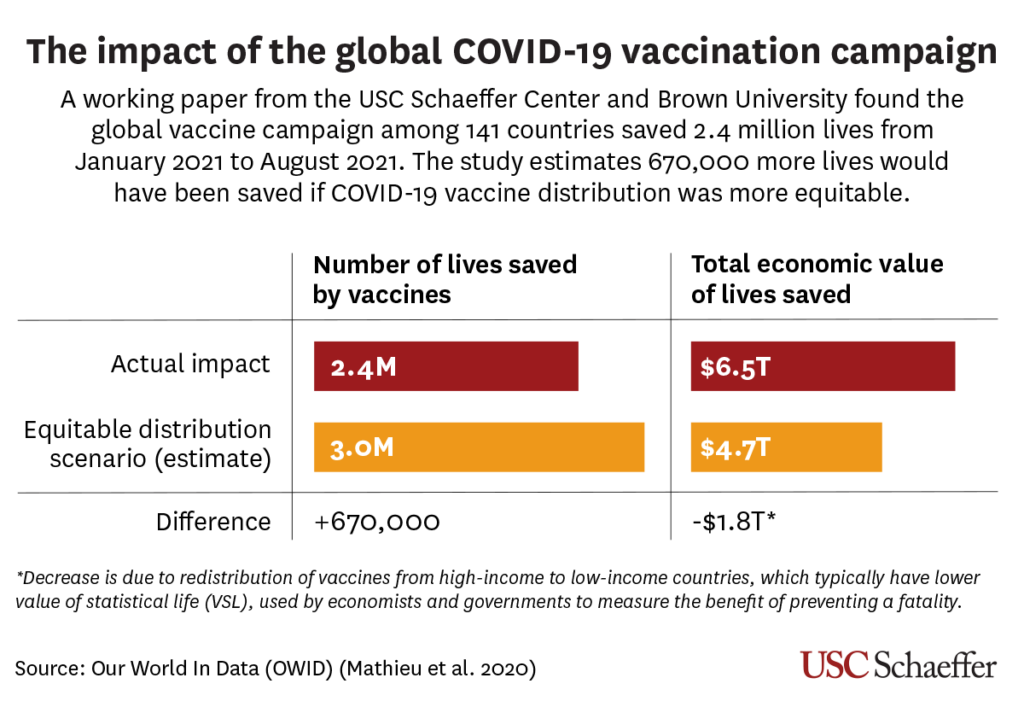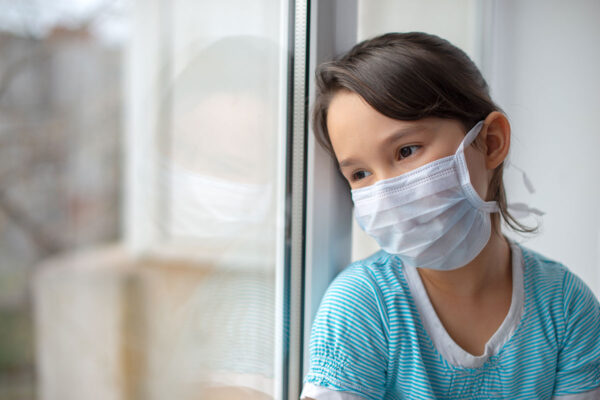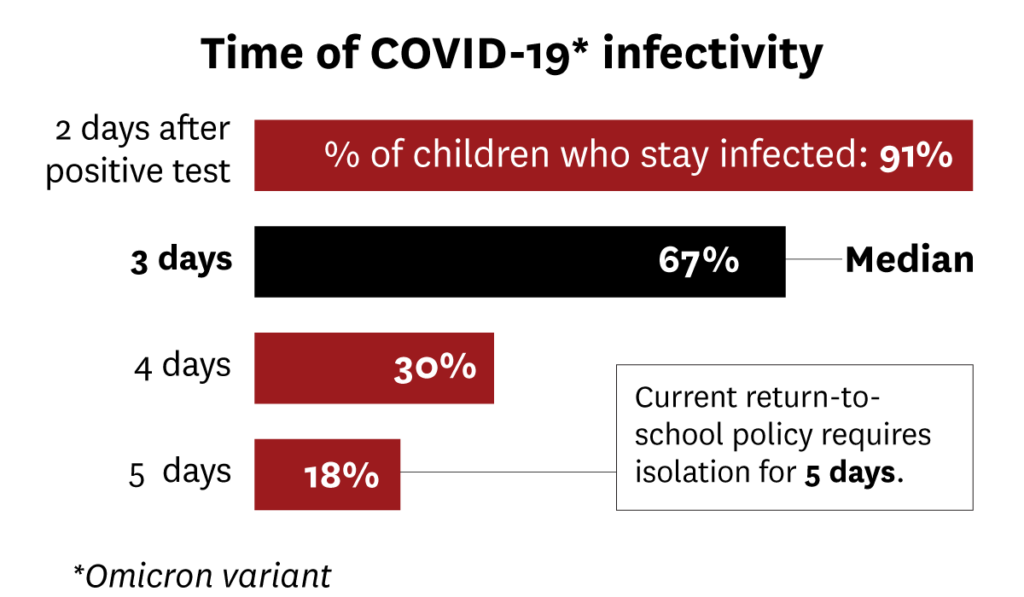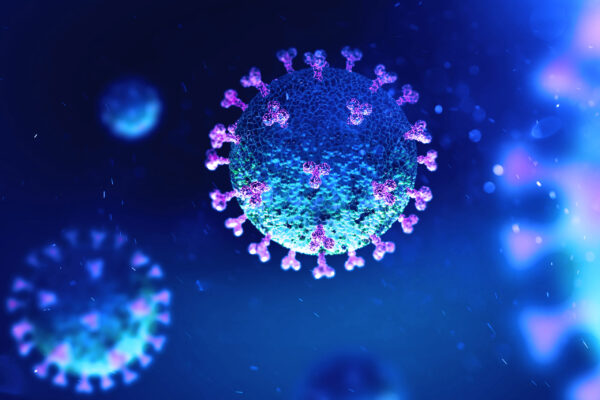Research Program
The COVID-19 Initiative
COVID-19 has cost millions of lives worldwide, overwhelmed healthcare systems, devastated economies and changed society for years to come. The Schaeffer Center’s COVID Initiative is working to improve public health and get people back to work without fear of infection.
Program Leadership
-

Neeraj Sood, PhD
Director, COVID Initiative, USC Schaeffer Center
Senior Scholar, USC Schaeffer Institute
Professor of Public Policy, USC Price School of Public Policy
COVID-19 Vaccination Campaign Saved 2.4 Million Lives
The campaign could have saved about 670,000 more lives had the vaccines been distributed equitably, according to a working paper from the USC Schaeffer Center and Brown University.
Read Full Story
Featured Research and Perspectives

How Long Should Kids Isolate After They’ve Contracted COVID-19?
Children infected with the Omicron variant remained infectious for a median time of three days after testing positive for the virus, according to USC Schaeffer Center and Stanford researchers.

Causes and Costs of Global COVID-19 Vaccine Inequity
The main contributors to vaccine inequity include vaccine nationalism, intellectual property rights, constraints in manufacturing capacity, poor resilience of healthcare systems, and vaccine hesitancy.

Post-COVID Trends in Hospital Financial Performance: Updated Data from California Paint an Improved but Challenging Picture for Hospitals and Commercially Insured Patients
Total hospital volume has returned to pre-COVID levels, but with changes.

COVID-19’s Total Cost to the U.S. Economy Will Reach $14 Trillion by End of 2023
Workplace absences, along with sales lost due to the cessation of brick-and-mortar retail shopping, airline travel and public gatherings, contributed the most.
How Long Should Kids Isolate After They’ve Contracted COVID-19?
Children infected with the Omicron variant remained infectious for a median time of three days after testing positive for the virus, according to USC Schaeffer Center and Stanford researchers.
Read Full Story
Shelter-in-Place Policies and Excess Mortality
Shelter-in-place policies were one of the most widely used policy responses to the COVID-19 pandemic. Neeraj Sood presented his research on the impact of these policies on excess mortality for a NBER research spotlight webinar.
More on COVID

There’s an Easy Way to Increase Rates of COVID Booster Vaccinations
USC research finds that the answer to getting more shots into arms is just a text message or email away.

Cross-Sectional Study Examining Household Factors Associated with SARS-CoV-2 Seropositivity in Low-Income Children in L.A.
Food insecure households with low head-of-household education, and at least one household member with type 2 diabetes, had the highest risk of SARS-CoV-2.

Role of Parents’ Perceived Risk and Responsibility in Deciding on Children’s COVID-19 Vaccination
Parents’ perceptions of the COVID-19 vaccine’s long-term comparative risk and their greater anticipated responsibility for children getting sick if vaccinated (versus not) were associated with lower vaccine uptake among children of vaccinated parents.

COVID-19 Hospitalization and Mortality in Community-Dwelling Racially and Ethnically Diverse Persons Living with Dementia
Community-dwelling persons living with dementia (PLWD) are vulnerable to COVID-19 infection, severity, and mortality due to the high prevalence of comorbidities, reliance on caregivers, and potential inability to employ risk reduction measures, among other factors.
Ongoing Studies
Los Angeles COVID Response Innovations
Los Angeles Pandemic Surveillance Cohort Initiative
The Peter G. Peterson Foundation Pandemic Response Policy Research Fund
Funding for the COVID Initiative has been provided by the USC Office of the President, USC Office of the Provost, USC Lusk Center for Real Estate, Hilton Foundation, Jedel Family Foundation, Rockefeller Foundation, Office of Mayor Garcetti, Los Angeles County Department of Public Health, Arnold Schwarzenegger, and various individual donors.